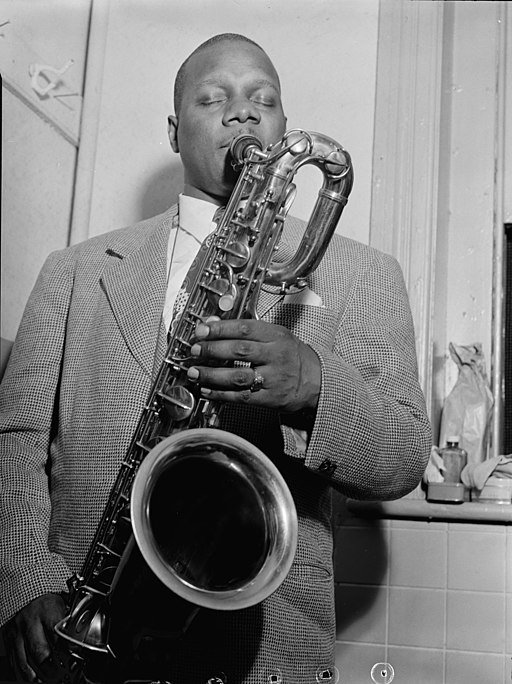Artist: Harry Carney
Harry Howell Carney was a jazz saxophonist and clarinetist who spent over four decades as a member of the Duke Ellington Orchestra.
Early influences on Carney's playing included Buster Bailey, Sidney Bechet, and Don Murray. Carney also reported that, for his baritone saxophone playing, he "tried to make the upper register sound like Coleman Hawkins and the lower register like Adrian Rollini".
After playing a variety of gigs in New York City at the age of 17, Carney was invited to join the Duke Ellington band for its performances in Boston in 1927. He soon recorded with Ellington too, with a first session in October that year. He stayed with the Ellington band for the rest of his life. The band began a residency at the Cotton Club in New York at the end of the year.
After Ellington added more personnel in 1928, Carney's main instrument became the baritone saxophone. He was a dominant figure on the baritone in jazz, with no serious rivals on the instrument until the advent of bebop in the mid-1940s. Within the overall sound of the Ellington band, Carney's baritone was often employed to play parts of harmonies that were above the obvious low pitching of the instrument; this altered the textures of the band's sound.
In January 1938, Carney was invited to play with Benny Goodman's band at Carnegie Hall. Recordings from this event were released as The Famous 1938 Carnegie Hall Jazz Concert. Carney also took up the bass clarinet around 1944. He "co-composed "Rockin' in Rhythm" and was usually responsible for executing the bubbling clarinet solo on this tune".
In 1957, Carney was part of a band led by pianist Billy Taylor that recorded the album Taylor Made Jazz.
Carney was the longest serving player in Ellington's orchestra. On occasions when Ellington was absent or wished to make a stage entrance after the band had begun playing the first piece of a performance, Carney would serve as the band's conductor. The Ellington orchestra typically travelled on a tour bus, but Ellington himself did not; he was driven separately by Carney, a "quiet, calm presence".
Ellington wrote many showpiece features for Carney throughout their time together. In 1973 Ellington built the Third Sacred Concert around Carney's baritone saxophone.
After Ellington's 1974 death, Carney said: "Without Duke, I have nothing to live for". Carney's final recording may have been under Mercer Ellington's leadership, for the album Continuum. Four months after Ellington's death, Carney also died, on October 8, 1974, in New York. Two months after Carney's death, bassist Charles Mingus recorded Sy Johnson's elegy "For Harry Carney"; the track was released on the album Changes Two.
Further information about Harry Carney is found at here.
Photography credit: William P. Gottlieb, Public Domain, via Wikimedia Commons
This content was excerpted from the Wikipedia article,Harry Carney - Wikipedia, which is released under the Creative Commons Attribution-Share-Alike License 3.0 (https://creativecommons.org/licenses/by-sa/3.0/).
Sophisticated Lady - Duke Ellington and his orchestra
Sophisticated Lady - Duke Ellington - Harry Carney (baritone saxophone)
Harry Carney: Videos
Harry Carney – The Duke's Men ( Full Album )

